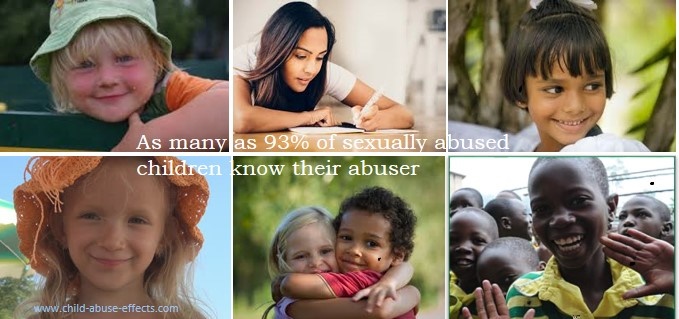Adolescent Sex Offenders

Adolescent sex offenders in Canada commit 20% - 30% of the sexual offences. Adolescents who sexually abuse are often acting out their own victimization.
Though offenders in any age category are mostly male (see statistics below), just like adult offenders, juvenile offenders can be either male or female.
|
Adolescents who offend tend to stay close to home when choosing their victims.
|
|
||
|---|---|---|
Those Who Offend Against Peers/Adults | Those Who Offend Against Children | |
| » are aggressive | » have a higher number of male victims | |
| » cause injuries | » 40% of victims are siblings or other relatives | |
| » are likely to use weapons | » can be aggressive/violent, but more frequently use opportunity and guile: trickery, bribery, or threatening loss of relationship | |
| » have a history of non-sexual criminal offences | » lack self-esteem | |
| » display delinquent and conduct-disordered behavior | » lack social competence | |
| » are more likely to assault females (whether casual acquaintances or strangers) | » show signs of depression | |
Some Statistics on Adolescent Sex Offenders:
 |
21% of those charged with sexual assault in Canada are between the ages of 12 and 19 years of age (Children's Aid Society of Toronto, 1999, p. 33). |
 |
Approximately 20% of all people charged with a sexual offence in North America are juveniles (Worling & Curwin, 2000, p. 9654). |
 | In an American Justice Department study of 60,991 victims, 23% of all sexual offenders were under age 18. Juveniles aged 12-17 years of age committed 19.5% of these sexual assaults (Snyder, 2000, p. 85). |
 |
Adolescent offenders usually use verbal coercion rather than violence and aggression to obtain compliance of their victims (Zolondekk et al., 2001, pp. 73-856). |
 |
Female adolescent offenders abuse equal numbers of males and females; and in 100% of the cases, the offender was baby-sitting (Rudin et al., 1995, p. 9657). |
|
|
...adolescent offenders sexually abuse or sexually assault children, peers and adults because they want to. They want to because the sexual activity gives them pleasure. They may also offend because they are angry and want to hurt others. They may offend because they do not care about hurting others. They may be bored and lonely and the sexual activity relieves these feelings. They have fantasized about the offence for some time before the offence, and they will have sexual fantasies about the offence after it has occurred. These sexual fantasies propel adolescent sex offenders down the pathway to the offence. Adolescent sex offenders have a number of beliefs and thoughts that make the offence acceptable and justifies what they do. In a specific case, given the right set of circumstances the adolescent sex offender acts on his feelings and thoughts. And another victim is hurt. |
<< Back to Sex Offenders
References
1 Hunter, J. (2000). Understanding juvenile sex offenders: Research findings and guidelines for effective management and treatment. Institute of Law, Psychiatry and Public Policy, University of Virginia: Juvenile Forensic Evaluation Resource Center.
2 Hunter, J. (2000). Understanding juvenile sex offenders: Research findings and guidelines for effective management and treatment. Institute of Law, Psychiatry and Public Policy, University of Virginia: Juvenile Forensic Evaluation Resource Center.
3 Children's Aid Society of Toronto. (1999). Communication online bulletin.
4 Worling, J. & Curwin, T. (2000, July). Adolescent sexual recidivism: Success of specialized treatment and implications for risk prediction. Child Abuse & Neglect, 24(7), 965.
5 Snyder, H. (2000, July), Sexual assault of young children as reported to law enforcement: Victim, incident, and offender characteristics. Retrived December, 2002, American Bureau of Justice Statistics Clearinghouse, http://www.ojp.usdoj.gov/bjs/ 312-314.
6 Zolondekk, S., Abel, G., Northy, W., & Jordon, A. (2001). The self reported behaviors of juvenile sex offenders. Journal of Interpersonal Violence, 16(1), 73-85.
7 Rudin, M., Zalewski, C., & Bodmer-Turner, J. (1995). Characteristics of child sexual abuse victims according to perpetrator gender. Child Abuse and Neglect, 19(8), 963-973.
8 Gingell, C. (1993). Adolescent sex offenders: "No more victims". Vancouver, B.C.: Institute on Family Violence.
From Victim to Victory
a memoir
How I got over the devastating effects of child abuse and moved on with my life
From Victim to Victory
a memoir
How I got over the devastating effects of child abuse and moved on with my life
Most Recent
-
Converging Stolen Lives
Jan 30, 18 01:13 PM
There was a time and space I didn’t think about you, or your abuse. Where when I looked back at my life, I only saw normal things, a normal childhood. -
A letter to one of the 13 Turpin children
Jan 29, 18 11:33 AM
A heartfelt letter by a former classmate that speaks to bullying and regrets. You'll find it on my Facebook group. I hope you'll join and get in on the discussion. -
Dissociated From Abuse
Jan 29, 18 11:00 AM
I was sexually abused by my father from age 6 to 13, which stopped when I started talking about it during the day. The teenage brother of my best friend
 A study by Hunter (2000, p. 21) of juvenile offenders who sexually offended against children found that as many as 40% of their victims were either siblings or other relatives.
A study by Hunter (2000, p. 21) of juvenile offenders who sexually offended against children found that as many as 40% of their victims were either siblings or other relatives.


